F1 vs F1B Labradoodles [the REAL Differences]
What do you get when you cross the intelligence, loyalty, and physical prowess of a poodle with the gentle, easy-going, and infinite enthusiasm of a lab?
An ultra-trainable puppy with fluffy curls and tons of energy!
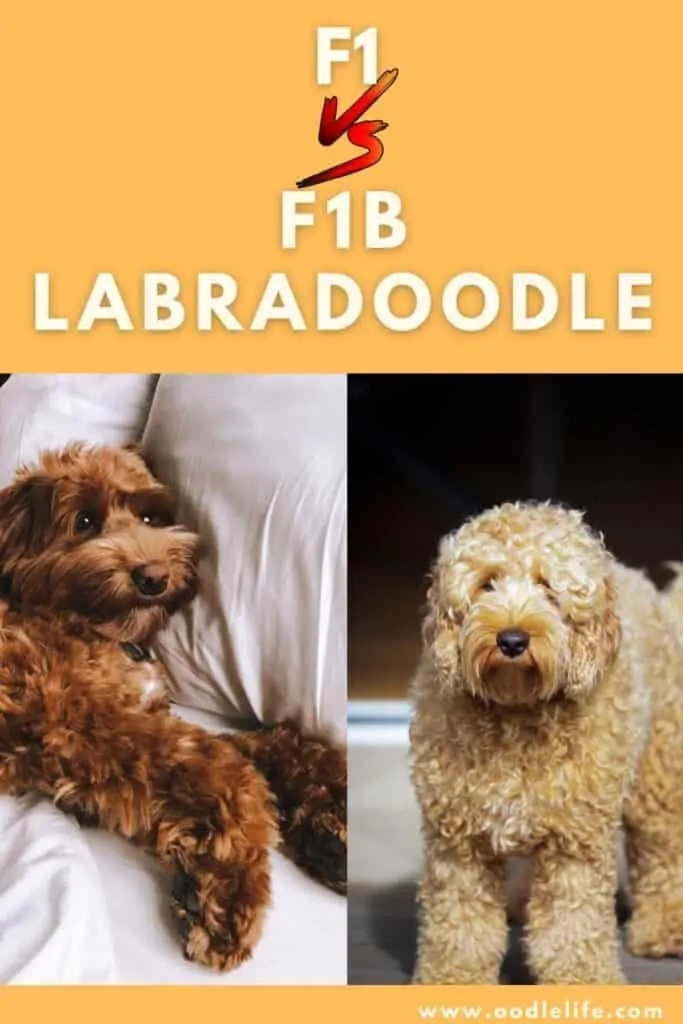
Labradoodles combine all the best traits of their purebred parents into one irresistibly affectionate pooch.
These so-called “designer dogs” have been stealing the hearts of pet owners across the nation because of how easily they fit right in with most families. They’re a shining example of what we love most about dogs because of their sweet faces, playful personalities, and clever minds.
If you’ve already spent some time researching this crossbred cutie, you already know that it’s a mix between a purebred poodle and a purebred labrador retriever.
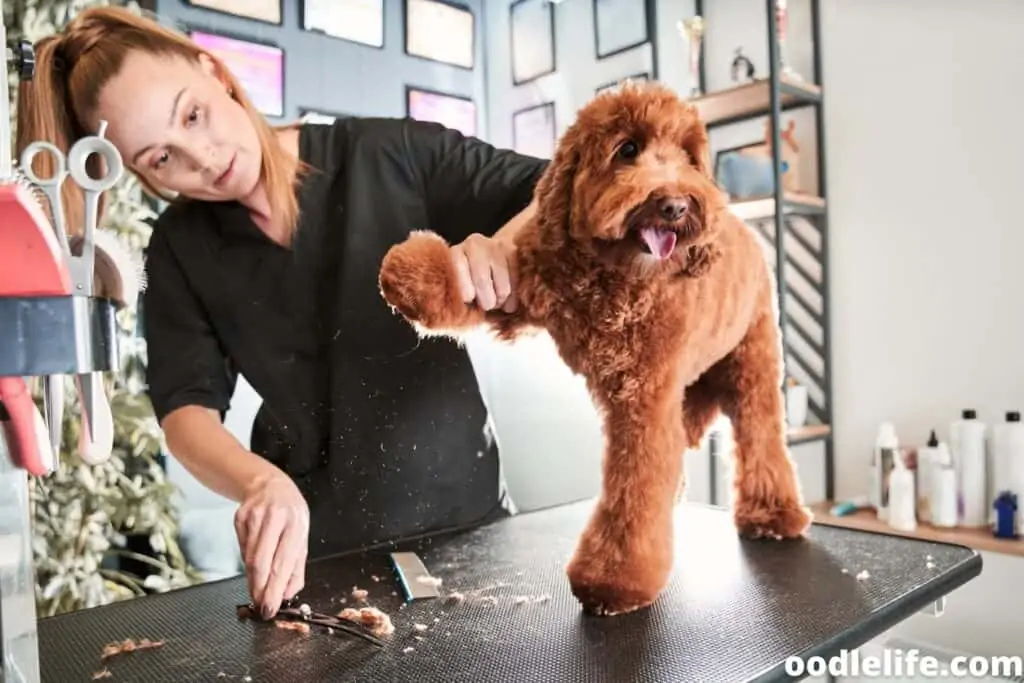
You probably also noticed that most breeders use terms like “F1,” “F1B,” and “F2” to describe their Doodles. But what exactly does that mean?
In this guide to Labradoodle generations, you’ll learn more about what those names mean.
We’ll also give you some insight into generational similarities and differences of temperament and appearance to help you pick the perfect pup for your family!
What’s the Main Difference Between F1 vs. F1B Labradoodles?
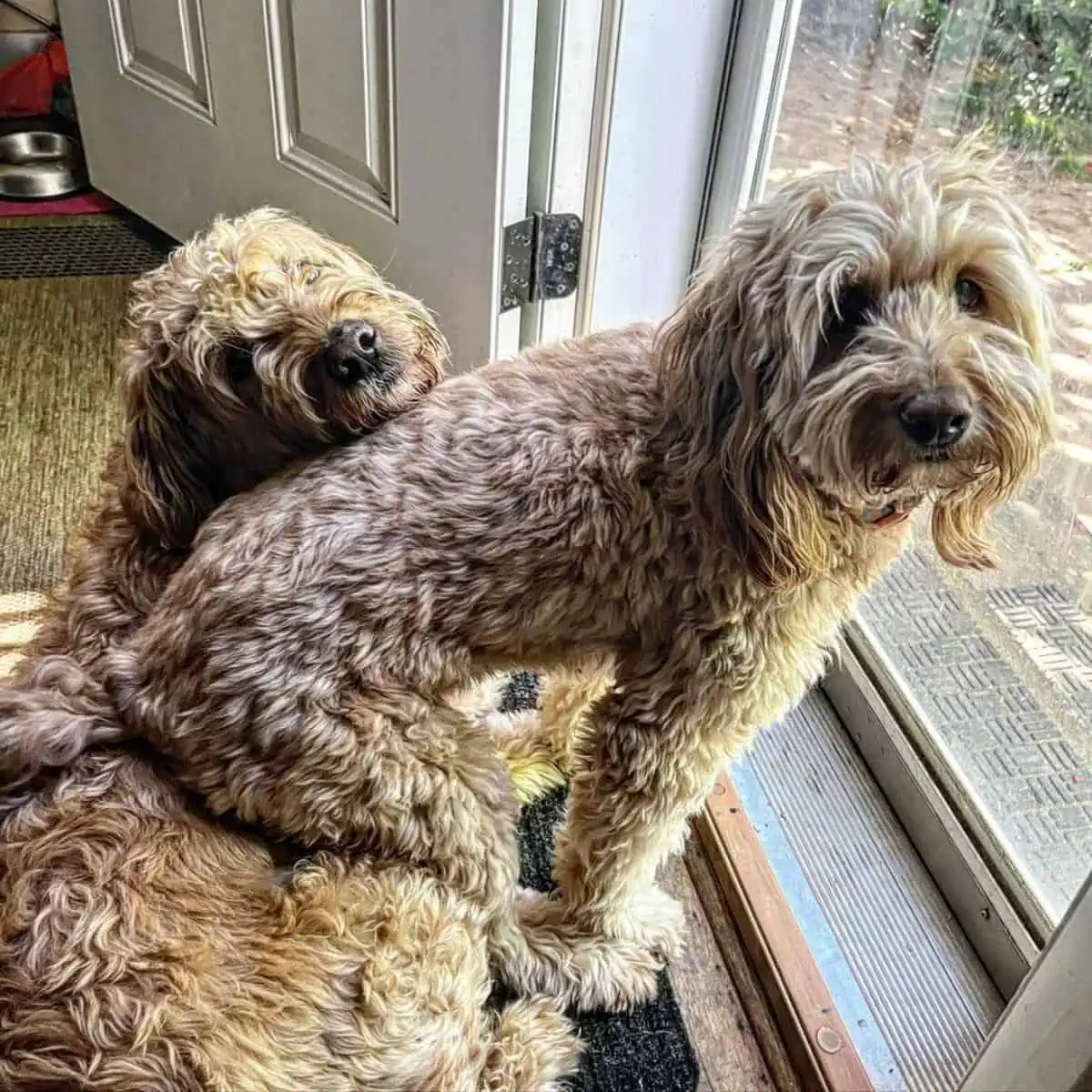
We can summarize the super short and simple answer of the difference between F1 vs. F1B Labradoodles in two bullet points:
- F1 Labradoodles are 50% poodle and 50% labrador retriever
- F1B Labradoodles are 75% poodle and 25% labrador retriever
Of course, there’s more that goes into that equation because that little extra bit of poodle genetics makes a big difference!
A Few Definitions

Before we start getting a little more technical with the key differences of an F1 vs. F1B Labradoodle, there are a few definitions that you should know:
- P stands for “parent,” or the first generation in a family line. In this case, it would be a purebred poodle and a purebred lab!
- F stands for “filial,” which means any offspring that result from crossbreeding, AKA the Labradoodle.
- The number represents the generation. Breeders label the first generation with a 1, the 2nd generation with a 2, etc.
- The B stands for “backcross,” or crossbreeding a Labradoodle with a purebred poodle. If you see multiple Bs, it means that the Labradoodle’s family line backcrosses more than once.
Dog breeders aren’t the only people who use these names to describe a generation.
Scientists, farmers, and any other professional working with genetics use the same nicknames when describing purebred, crossbred, and hybrid combinations in all species, including plants, animals, and people.
What Are F1 Labradoodles?
With that in mind, we have our first generation of Labradoodles– the F1 generation. These precocious puppies are the direct offspring of a 100% poodle parent and a 100% labrador retriever parent, making them 50% poodle and 50% labrador.
Because it’s so close genetically to the purebred parent, this generation is the most likely to inherit “less desirable characteristics,” like health problems common to either breed or non-hypoallergenic coat textures.
Like all non-purebred dogs, the F1 generation has hybrid vigor. This means that they are typically healthier than their parents because they are less likely to inherit conditions either breed is prone to.
For example, labs are far more likely to develop arthritis as they age. A puppy with one parent who is likely to pass on the condition and one that is unlikely to pass on the condition has a lessened chance of inheriting the disease.
On the other hand, Purebreds are only inheriting from a single gene pool– whichever breed their parents are– making them far more likely to inherit a breed-specific disease.
Temperament
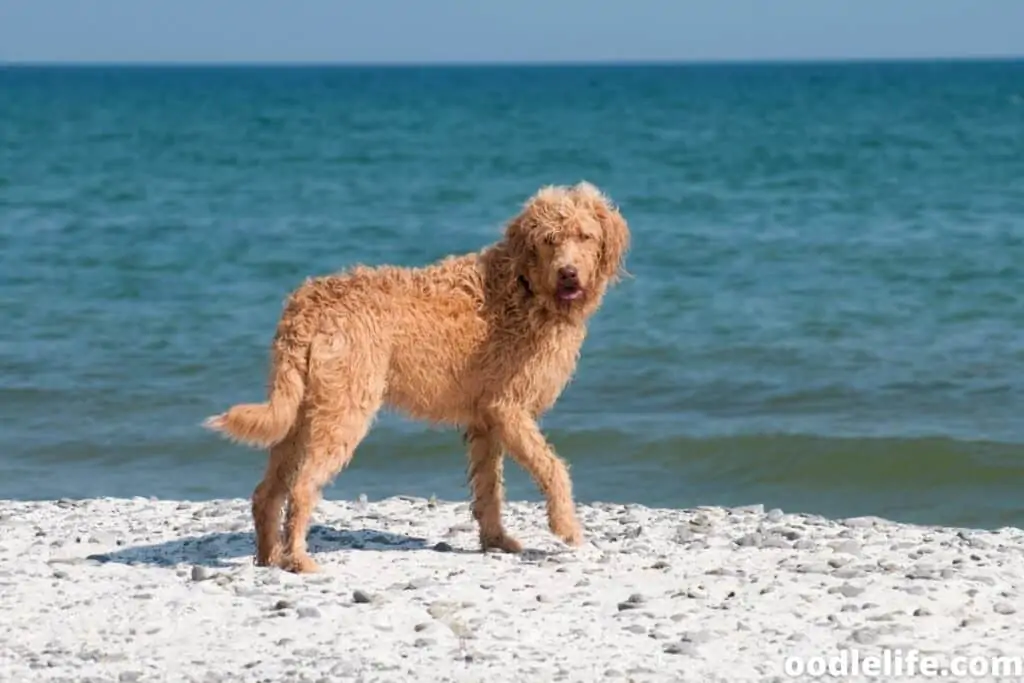
“Negative” breed temperaments from both parents are more common in the F1 generation, such as a poodle’s aloofness or a lab’s excessive barking.
In the F1 generation, puppies end up with 25% more labrador genes than F1B puppies. That’s why they tend to be so much more excitable, energetic, and playful than their backbred brethren.
They also tend to be less territorial, which is a trait more common in poodles than labs.
If you’re hunting for a pup that will protect your home, you may want to go searching for a later generation of Labradoodle. The F1 generation is more likely to try to make friends with an intruder than to scare it off!
Appearance
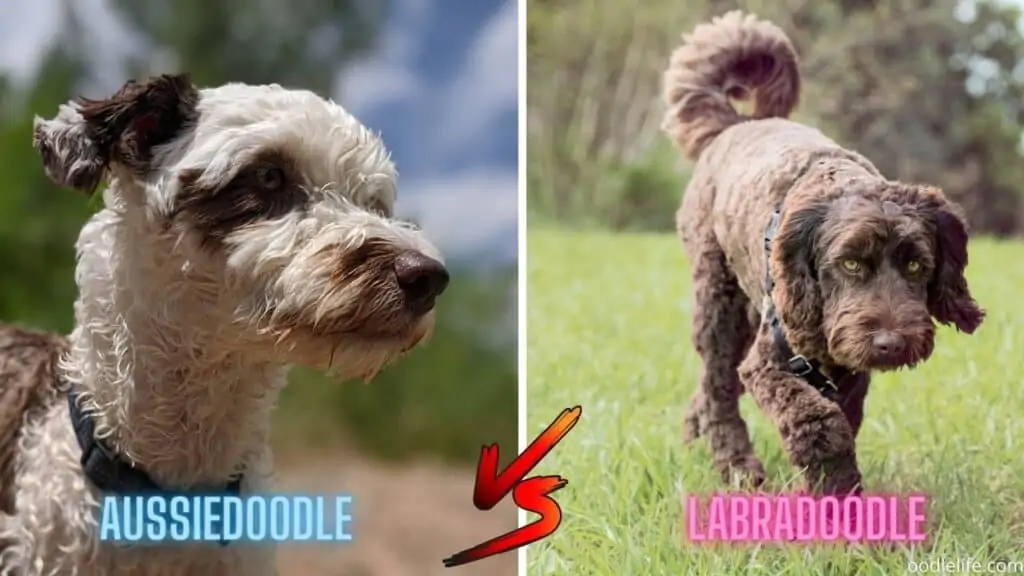
The F1 generation has the most differences in their gene pool because the two parents are completely different breeds.
That means there are a ton of color, coat, and size combinations possible!
For example, Poodles are well-known for their hypoallergenic, curly coats. On the other hand, labradors can’t help but leave their short, straight hair on every surface they encounter.
One of the main reasons Labradoodles are so popular is that they can be an allergy-friendly pup, with hair more similar to the Poodle’s, but that’s not always the case.
The F1 generation is much more likely than their future relatives to inherit a flat coat, with scruffy hair more similar to the lab.
While it will shed less than the purebred parent, its unsuspecting owners are in for an unpleasant surprise when the sniffles start.
What Are F1B Labradoodles?
In the F1B generation, the puppies have one Labradoodle parent and one poodle parent, making them 25% lab and 75% poodle.
This generation is typically more expensive and more sought after than the first generation because of their coat texture.
The F1B generation has some hybrid vigor, but not as much as the first generation. By increasing the number of poodle genes, you’re also increasing the likelihood of the breed’s most frequently seen medical conditions, like epilepsy and Addison’s disease.
Temperament
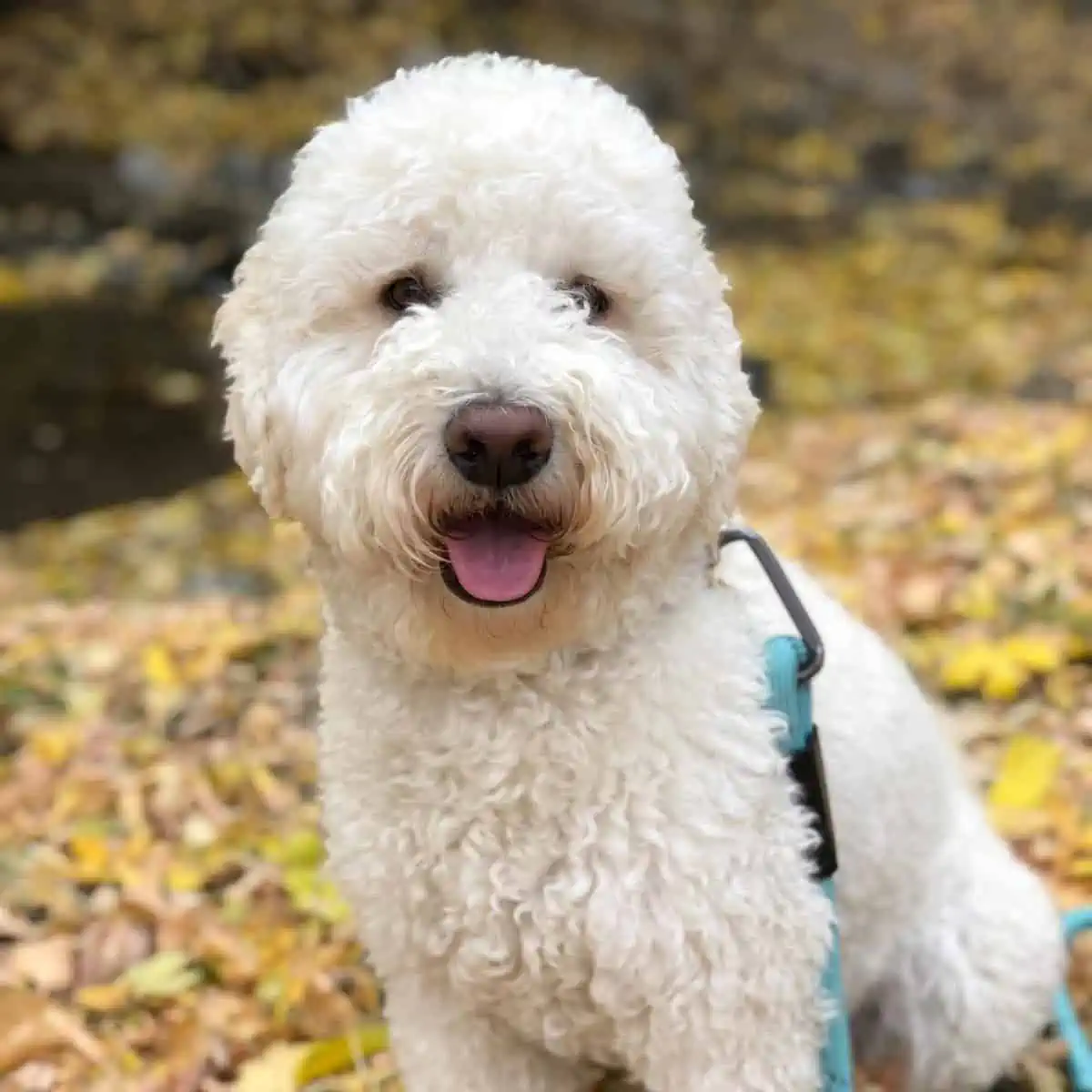
While all generations of Labradoodles will be active, joyful, and clever canines, there are instances where F1B generation puppies inherit more poodle traits because there are more of them in the mix.
If you want a Labradoodle that’s always ready for snuggling and prefers a quiet night at home, the F1B generation can be a better fit.
Poodles are more reserved than the friendly labrador, but they’re certainly not aggressive dogs. An F1B Labradoodle just might take a little longer to warm up to new people or situations.
They also tend to be “hypersensitive” to sudden noises or physical touch. While a labrador is less likely to startle awake if you come in for a hasty head pat, a poodle might react with a short yelp or flinch.
Compared to Labradors, who are always ready to join in the fun, poodles also do better with a bit of peace and quiet. Chaos or too much activity can make them very nervous, and they’ll shy away from those types of situations.
There are still sure signs of a lab’s temperament, even if it’s less than the previous generation. They’ll be more sociable and do better in families with young children than the purebred poodle.
Appearance
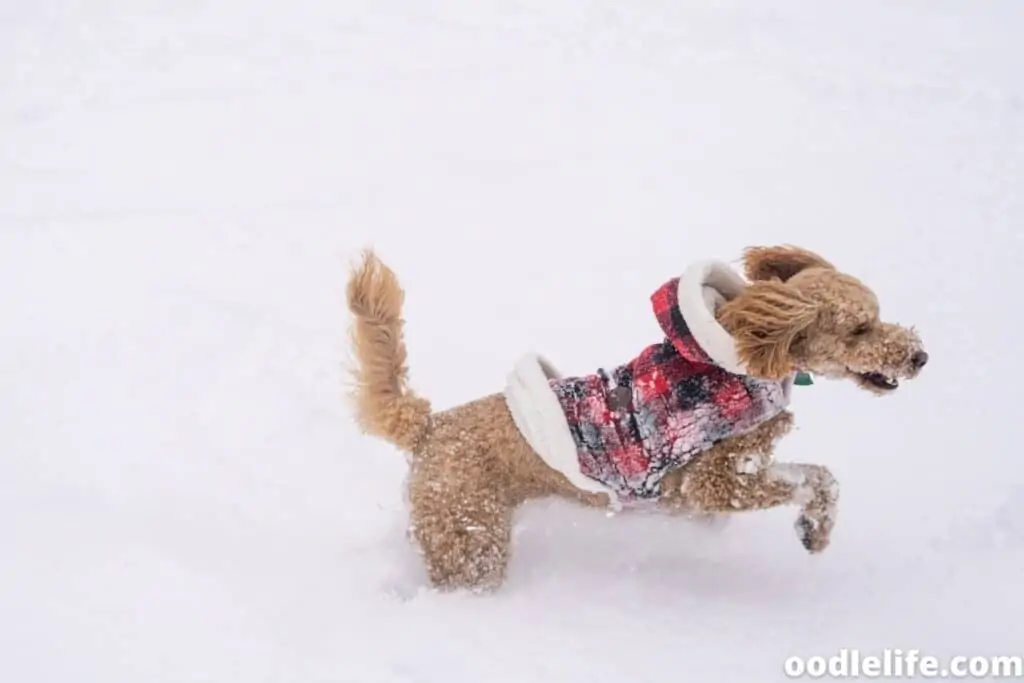
By backcrossing a Labradoodle with a poodle, breeders introduce more traits common to the poodle, including their tightly curled coats.
The F1B generation will shed far less than the F1 generation. It’s nearly impossible for a backcrossed puppy to end up with the flat coat gene. Instead, your puppy will have a hypoallergenic wavy or curly coat more like that of a poodle.
But, be ready to groom your four-legged friend at least once a week. Curly coats tend to mat, and once your Labradoodle has one, it’s tough to tangle with. That’s why F1B pups do better with regular trims to keep their coats between 1-2″ long.
Which generation of Labradoodle is right for me?

No matter which generation you welcome into your home, you’re sure to have oodles of fun with your Labradoodle!
If allergies aren’t a concern, F1 Labradoodles are a great option. They’re typically less expensive and tend to have fewer health concerns.
For folks who want to avoid the chances of your pup bringing sneezing, itchy eyes, and a runny nose along with it, F1B Labradoodles are a better choice. (They shed less).
Remember that all breeds of dogs have their own quirks, personalities, and care instructions. Even male and female Labradoodles have quirky differences. If you take care of your puppy with that in mind, you’re sure to fall in love.